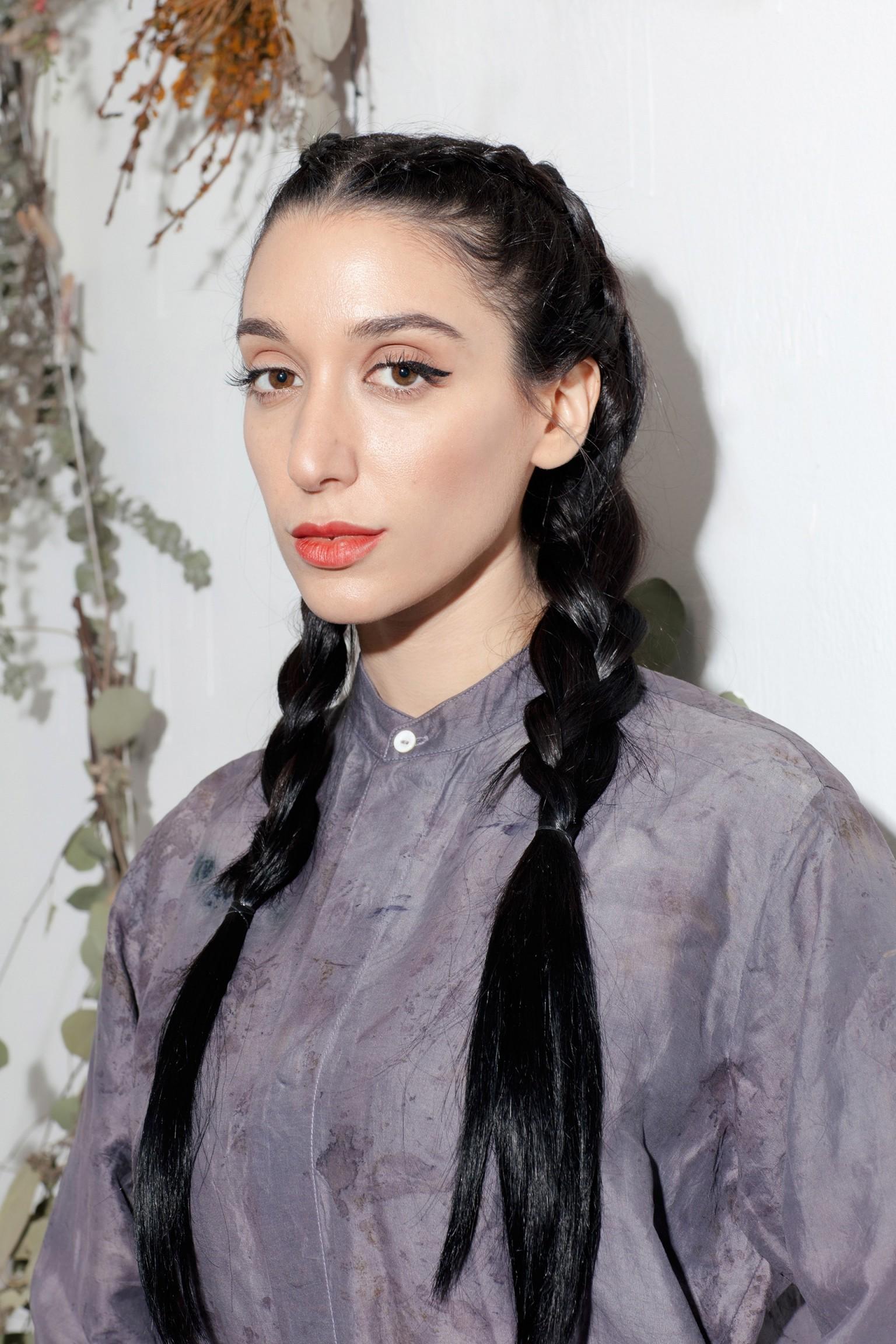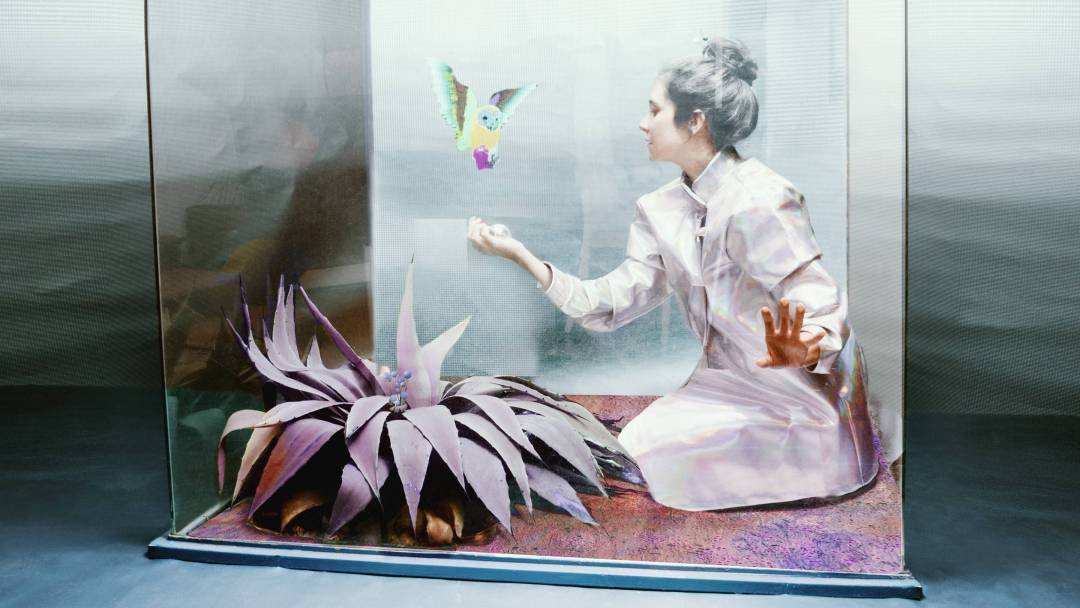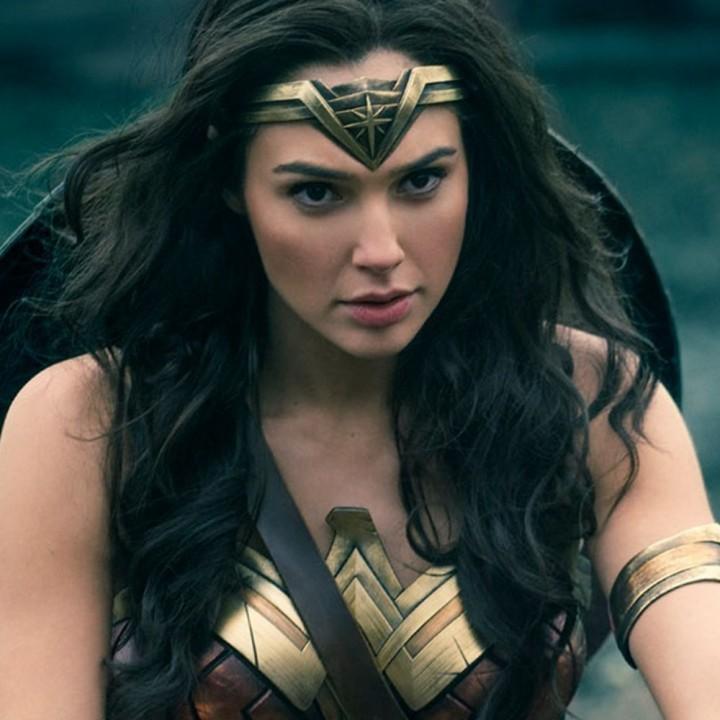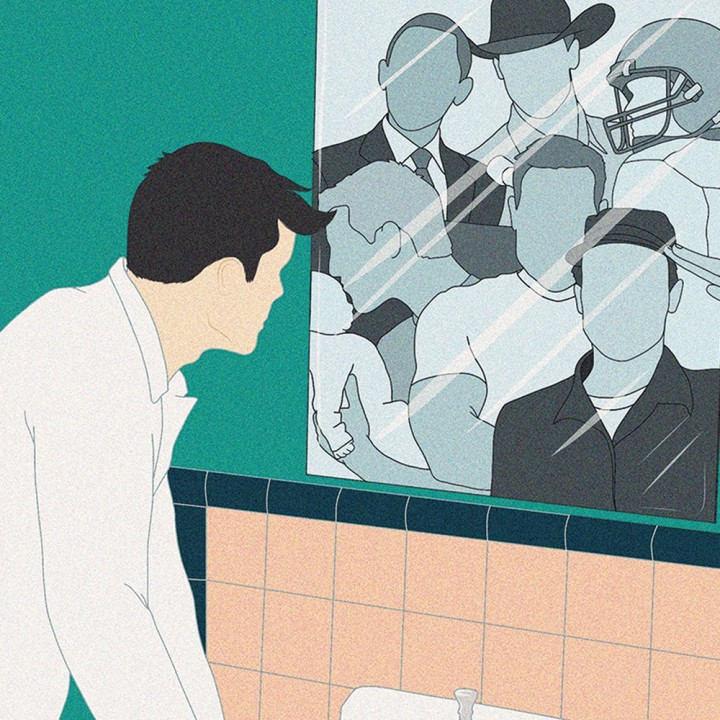
The Art of Dildo Design
Vanessa Cuccia grabs a thick book from the top of a stack of literature in the corner of her Gowanus, Brooklyn workspace. Flowers and tapestries adorn the room, a stark contrast to the white walls surrounding them. A bookshelf holds more flora and fauna, a few trinkets and rounded obelisk-shaped wooden and crystal figures. They’re sex toys—items providing more than just pleasure for Cuccia and her customer base.
As a child, Cuccia, now 29, was enamored with the idea of magic; in her early 20s, she moved from New York to California and worked as a fairy princess for tea parties, fantastic winged-regalia and all. Her other job was as a web order fulfillment clerk at a sex toy shop where she witnessed firsthand the male influence on products designed for female pleasure. “It seemed that in order for people to be okay with sexuality, they needed to be tongue-in-cheek, really goofy and cheesy,” Cuccia remembers.
Around this time, Cuccia was introduced by a friend to a woman with an expansive crystal collection. As she perused the items, her gaze landed on a phallic-shaped crystal. She recalls a palpable energy radiating off of the solid; a sensual attraction she hadn’t experienced with any of the adult toys in the shop where she worked. It was then that Cuccia realized she could pair the apparent healing and metaphysical properties of crystals with pleasure by creating a line of sex toys made of natural crystal, a company she calls Chakrubs.
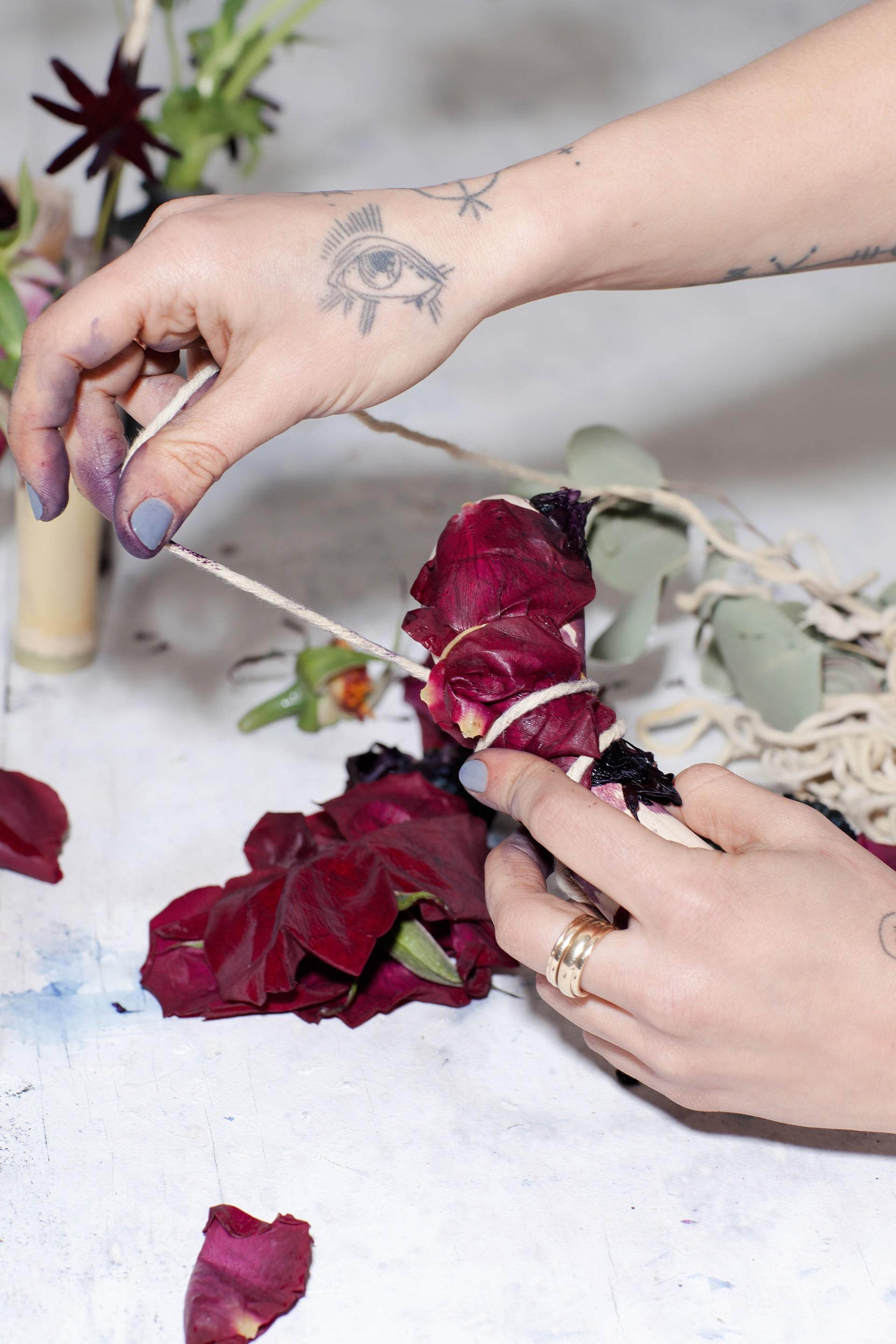
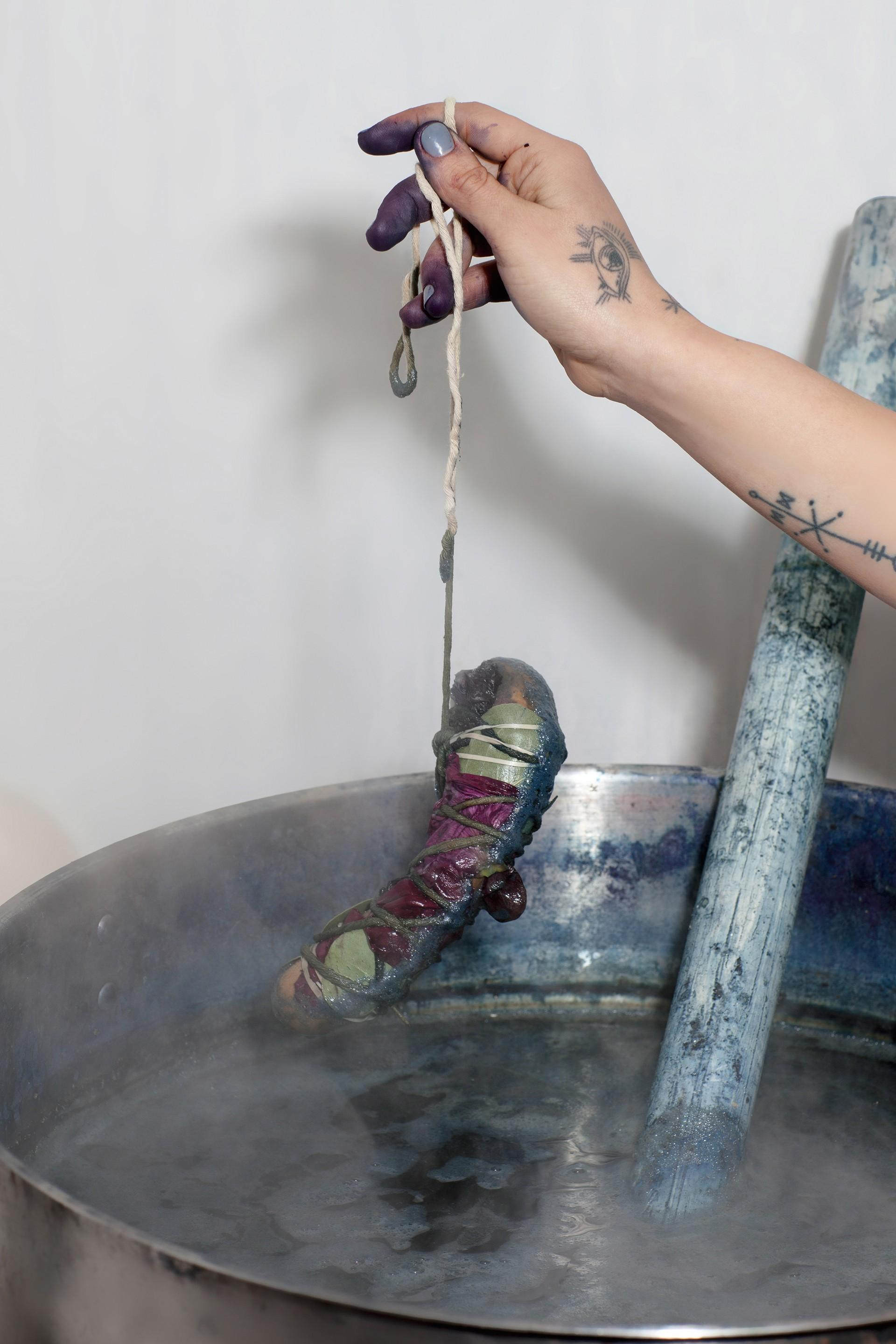
Like the fairy tales she loved as a child, Cuccia aims to take something amorphous like sexuality, spirituality, arousal and even magic, and make it tangible. That this crystal, this physical manifestation of earth science, can help users channel their energy into sexual empowerment and emotional clarity became its own kind of magic, she says. But Cuccia knew there was more to her practice, something more ethereal, but still sensual and awakening.
The Forest Line, a new collection of Chakrubs crafted from wood naturally dyed with pigment from flowers, captures the whimsy of fables and their wooded settings while playing with a new medium. Available now, the Forest Line sees Cuccia collaborating with woodworker Kevin Itwaru to bring her designs to life, and Cara Marie Piazza, a natural textile dyer who uses frozen eucalyptus, rose, and indigo exposed to vinegar to dye the wood. Piazza then steams, sands and coats in a body-safe finish. The combination of flowers and wood, Cuccia says, evokes a different kind of verve, one that is more subtle. “The energy differs between crystals and flowers because crystals take thousands of years to form,” she explains. “With the flower essences and the wood, it's a little bit more of a transient energy. Because they're here for just a short amount of time, the flowers wilt. It's acknowledging that type of energy which is more soft.”
Sexuality is sometimes the only creative, imaginative outlet that people have—sexual fantasies, role playing. You can be anything that you want to be.
The child of a medical inventor father and a mother who composed meditative music, Cuccia is well-practiced in walking the line between science and spirit. While she has knowledge of the female anatomy and customer preference—like "The G-spot is here" and "This design received positive feedback"—Cuccia ultimately relies on intuition when it comes to Chakrubs. “It's about what shape is pleasing to the eye and not intimidating,” she says. “It's going to invite this appreciation for the art that will make you attracted to it and feel more comfortable exploring it.”
After creating the design, Cuccia sits down with Itwaru to discuss logistics in translating her vision into three dimensions. When the piece is shaped, Cuccia then sands each toy by hand, ensuring a smooth base for dying. The wooden Chakrubs are then handed off to Piazza, who’s studio is just down the hall from where Cuccia currently sits. Piazza retrieves bags of rose petals, eucalyptus, and indigo from a freezer and places them on a large white work table stained various shades of blue—the same color as her fingers. She wraps the plants around the wood, securing it with rope, finally steaming each for three hours. It’s a process she developed herself. “Wood takes the dye so beautifully,” Piazza says, dabbing petals against a wooden Chakrub revealing the deep blue blots left behind. The toys are then sanded again and completed with a glossy, hypoallergenic smooth finish.

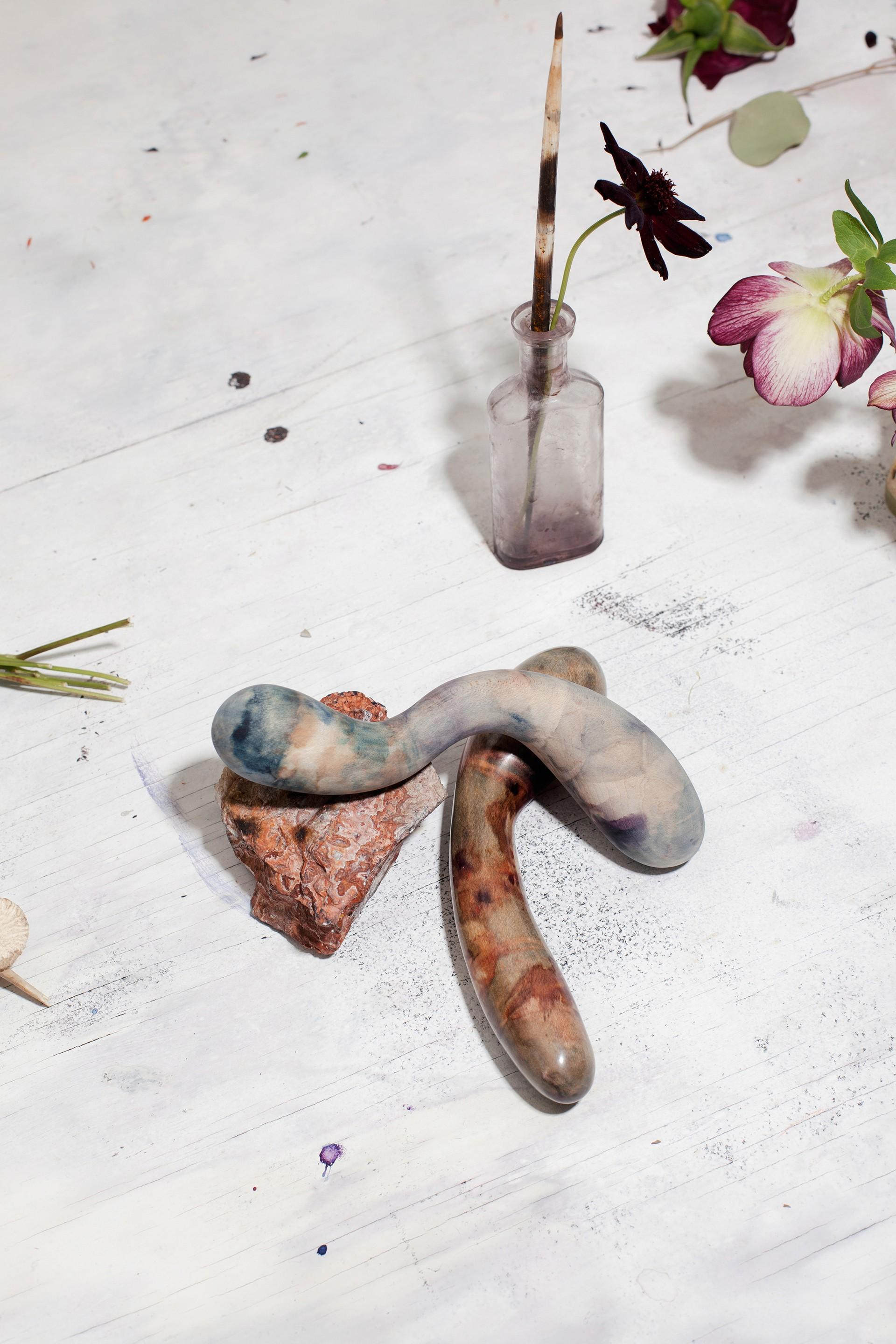
It felt like a good omen when, at a meeting with a chef who cooks with flowers, the old Italian children’s story of “Pinocchio” came up. They spoke of a blue fairy who, in the story, saves Pinocchio from an untimely death. “Pinocchio was made of wood and the fairy is called the Fairy [with the Turquoise hair],” Cuccia says referring to indigo’s blue hue used in the Forest Line. “So now this line is becoming a lot about fairy tales, fables and fantasy. This is starting to become a statement on allowing your imagination to guide you. That imagination, that creativity, that childlike wonderment, that belief in magic is slipping away. Sexuality is sometimes the only creative, imaginative outlet that people have—sexual fantasies, role playing. You can be anything that you want to be.”

